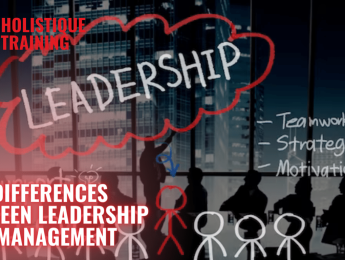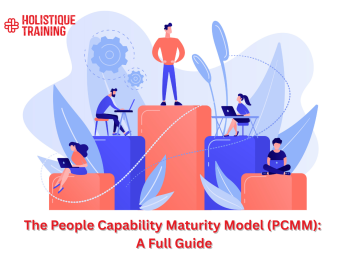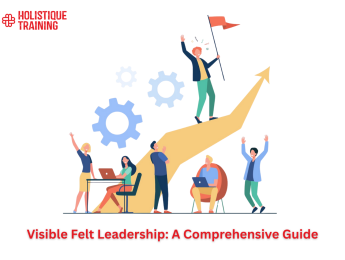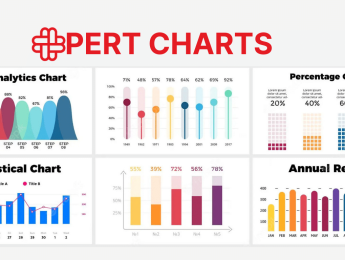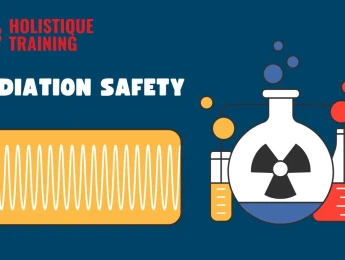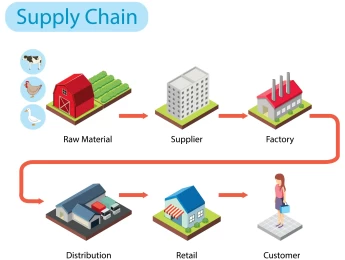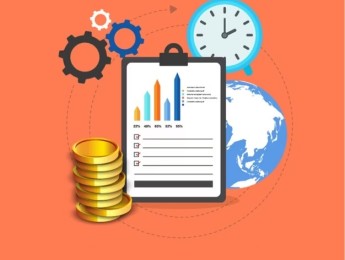Introduction
Effective decision-making is the cornerstone of successful leadership and business operations. Making informed, timely, and strategic decisions can significantly influence an organisation's trajectory, ensuring sustained growth, competitiveness, and adaptability in a rapidly evolving business landscape. This blog post delves into the concept of strategic decision-making, exploring various decision-making models, the biases that can affect judgment, and how to choose the right approach to optimise business outcomes. By understanding these frameworks and potential pitfalls, leaders can make better decisions that drive their organisations forward.
What Is Strategic Decision-Making?
Strategic decision-making involves choices that shape an organisation's long-term direction and success. Unlike routine decisions that address day-to-day operations, strategic decisions are often complex and involve significant risks, uncertainties, and long-term implications. These decisions typically address critical areas such as resource allocation, market entry or exit, product development, and mergers and acquisitions.
At its core, strategic decision-making requires a comprehensive understanding of an organisation’s goals, values, and the external environment. It involves evaluating various options, anticipating potential outcomes, and selecting the course of action that aligns with the organisation's overarching strategy. Given the high stakes, strategic decision-making often necessitates a collaborative approach, drawing on the insights and expertise of various stakeholders.
KPI | Description |
Decision Accuracy | Measure of how often decisions are correct. |
Implementation Success | Degree to which decisions are effectively executed. |
Time to Decision | Time taken to reach a decision. |
Return on Investment (ROI) | Financial return generated from decisions. |
Stakeholder Satisfaction | Satisfaction level of those affected by decisions. |
Table: KPIs of strategic decision-making
Why Is Strategic Decision-Making Important in the Workplace?
Strategic decision-making is crucial in the workplace as it directly influences an organisation's long-term success and sustainability. It involves making choices that align with the company’s overarching goals and objectives, considering both the internal and external environments. The importance of strategic decision-making can be understood through several key aspects:
1. Alignment with Organisational Goals:
Strategic decisions ensure that the organisation's action supports the broader goals and mission. This alignment prevents resources from being wasted on initiatives that do not contribute to the company's success, thus optimising productivity and efficiency.
2. Improved Resource Allocation:
Organisations can allocate resources—such as time, money, and human capital—by focusing on strategic priorities more effectively. This ensures critical projects receive the necessary support while less important activities do not drain valuable resources.
3. Risk Management:
Strategic decision-making involves evaluating potential risks and rewards before making decisions. Organisations can mitigate risks, avoid costly mistakes, and build resilience against unforeseen circumstances by considering long-term implications and possible challenges.
4. Enhanced Competitive Advantage:
Through strategic decision-making, companies can identify and capitalise on opportunities that differentiate them from competitors. This may involve investing in innovation , entering new markets, or improving customer service, all of which contribute to a stronger market position.
5. Adaptability to Change:
The business environment constantly evolves, with new challenges and opportunities emerging regularly. Strategic decision-making enables organisations to be proactive rather than reactive, allowing them to adapt quickly to market, technology, or regulatory landscape changes.
6. Long-Term Sustainability:
Short-term decisions may bring immediate benefits, but they can also lead to long-term problems if they do not align with the organisation's strategic vision. Strategic decision-making focuses on sustainable growth, ensuring that the company can thrive over time.
7. Employee Engagement and Motivation:
When employees understand the strategic direction of the company and see how their work contributes to its success, they are more likely to be engaged and motivated. This leads to higher productivity, job satisfaction, and retention rates.
8. Better Decision Quality:
Strategic decision-making often involves collaboration and input from various stakeholders, leading to more informed and well-rounded decisions. This collective input helps in identifying potential pitfalls and opportunities, improving the overall quality of decisions.
9. Enhanced Accountability:
Strategic decision-making creates a clear framework for measuring success. Organisations can hold individuals and teams accountable for their performance with well-defined goals and metrics, ensuring that everyone is working towards common objectives.
10. Innovation and Growth:
By focusing on long-term goals, strategic decision-making encourages innovation and continuous improvement. Organisations that prioritise strategic thinking are more likely to invest in research and development, explore new business models, and pursue growth opportunities.
In summary, strategic decision-making is not just about making the right choices; it's about making choices that are right for the organisation in the long term. It ensures that every action taken contributes to the overall success and sustainability of the business, enabling it to navigate challenges, seize opportunities, and achieve its goals.
The 5 Main Decision-Making Models
Understanding different decision-making models is crucial for leaders to make informed choices that align with their strategic objectives. Each model offers a unique approach to decision-making, with specific steps and contexts in which it is most effective.
1. Rational Decision-Making Model
The rational decision-making model is a systematic, step-by-step approach to making decisions. It is based on logical reasoning and aims to optimise outcomes by thoroughly analysing all available information.
Steps:
- Identify the problem: Clearly define the issue that requires a decision.
- Gather information: Collect relevant data and information to understand the problem fully.
- Generate alternatives: Develop a list of potential solutions or courses of action.
- Evaluate alternatives: Assess each option based on criteria such as feasibility, risks, and benefits.
- Choose the best alternative: Select the option that best addresses the problem and aligns with organisational goals.
- Implement the decision: Put the chosen solution into action.
- Monitor and evaluate: Continuously assess the decision's effectiveness and adjust as needed.
When to use it: The rational model is ideal for situations where the problem is well-defined, and sufficient information is available. It works best when decisions need to be objective, and there is enough time to evaluate all options thoroughly.
Decision-Making Model | Description | When to Use |
Rational Model | Systematic, logical approach to decision-making. | Complex decisions with ample information. |
Bounded Rationality | Limited rationality due to constraints. | When facing limited information or time. |
Vroom-Yetton Model | Focuses on decision quality and participation. | When balancing speed and involvement. |
Intuitive Model | Relies on gut feelings and instincts. | Rapid decisions with minimal data. |
Recognition-Primed Model | Based on recognizing patterns from experience. | When facing familiar, complex situations. |
Table: Comparing the different decision-making models
2. Bounded Rationality Model
The bounded rationality model recognizes that decision-makers often operate under constraints such as limited information, time, and cognitive capacity. Instead of seeking the optimal solution, this model suggests that individuals settle for a "satisficing" solution—one that meets the minimum acceptable criteria.
Steps:
- Define the problem: Identify the issue that needs a decision, considering the constraints.
- Identify key criteria: Determine the most important factors that the solution must address.
- Search for alternatives: Look for options that meet the essential criteria, without exhaustive analysis.
- Select a satisfactory alternative: Choose the first option that adequately addresses the problem, rather than seeking the perfect solution.
When to use it: The bounded rationality model is suitable when time is limited, and the problem is complex, making it impractical to evaluate every possible alternative. It is also useful when decision-makers need to act quickly and cannot afford to overanalyze the situation.
3. Vroom-Yetton Decision-Making Model
The Vroom-Yetton model is a situational approach to decision-making that emphasises the importance of context in determining the best decision-making style. It provides a framework for deciding whether to make decisions autocratically, consultatively, or through group consensus.
Steps:
- Assess the problem: Evaluate the decision's significance, complexity, and need for employee commitment.
- Determine the decision style: Choose between autocratic (leader decides), consultative (leader consults with team), or group (team decides) based on the situation.
- Implement the decision: Carry out the chosen approach, involving the appropriate stakeholders as needed.
- Review the outcome: Evaluate the decision's effectiveness and the appropriateness of the decision-making style used.
When to use it: The Vroom-Yetton model is ideal for leaders who need to determine the most effective way to make a decision based on specific circumstances, such as the need for team buy-in or the complexity of the problem.
4. Intuitive Decision-Making Model
The intuitive decision-making model relies on gut feelings and instincts rather than structured analysis. It is based on the idea that experienced decision-makers can quickly recognize patterns and make decisions without conscious reasoning. Many managers rely on intuition for at least some of their decisions. In fact, a study revealed that a whopping 89% of managers consistently trust their instincts when making choices, while 59% reported frequently using intuition as a key factor in their decision-making process.
Steps:
- Recognize the problem: Based on experience, identify the issue that requires a decision.
- Tap into intuition: Draw on past experiences and instincts to generate a solution.
- Make the decision: Choose the option that feels right based on intuition.
- Evaluate the outcome: Reflect on the decision to see if the intuition was correct and if the outcome was successful.
When to use it: This model is best used in situations where decisions need to be made quickly, and the decision-maker has significant experience and expertise in the relevant area. It is particularly useful in dynamic and unpredictable environments where detailed analysis is not feasible.
5. The Recognition-Primed Decision (RPD) Model
The recognition-primed decision model is a blend of intuition and analysis. It suggests that decision-makers use their experience to recognize patterns and assess the situation quickly, followed by evaluating the most relevant course of action.
Steps:
- Identify the situation: Recognize patterns based on past experiences.
- Evaluate the situation: Determine if the situation fits a familiar pattern or requires further analysis.
- Generate a solution: Based on recognition, identify the most appropriate action.
- Mentally simulate the outcome: Predict the potential results of the chosen action to ensure its viability.
- Implement the decision: Execute the chosen course of action.
When to use it: The RPD model is effective in high-pressure situations requiring quick decisions, and the decision-maker has substantial experience. It is commonly used in fields like emergency response, military operations, and healthcare.
What Are the Different Decision-Making Biases?
While decision-making models provide structured approaches, biases can still influence the decision-making process. These biases are cognitive shortcuts or tendencies that can lead to errors in judgment.
1. Confirmation Bias
Confirmation bias occurs when individuals favour information that confirms their pre-existing beliefs or hypotheses while ignoring or dismissing evidence that contradicts them. This bias can lead to poor decision-making, as it prevents objective analysis and consideration of all relevant information.
2. Availability Bias
Availability bias involves relying on immediate examples or information that comes to mind when evaluating a situation or decision. This bias can result in overestimating the likelihood of events that are more memorable or recent, while underestimating less salient but equally important factors.
3. Survivorship Bias
Survivorship bias occurs when decision-makers focus on successful outcomes while ignoring failures. This can lead to an inaccurate understanding of success factors and an overestimation of the effectiveness of certain strategies or actions.
4. Anchoring Bias
Anchoring bias refers to the tendency to rely too heavily on the first piece of information encountered (the "anchor") when making decisions. This initial information can disproportionately influence subsequent judgments, even if it is irrelevant or misleading. For example, in a study , participants spun a roulette-style wheel before estimating the percentage of U.N. countries located in Africa. Those who landed on a higher number during the spin tended to guess a higher percentage.
5. Halo Effect
The halo effect is a cognitive bias where the perception of one positive attribute influences the overall judgement of a person, product, or situation. For example, if a person is seen as competent in one area, they may be perceived as competent in other unrelated areas, leading to skewed decision-making.
Cons of Decision-Making Biases
Decision-making biases can have several negative consequences, particularly when they go unrecognised or unaddressed. Some of the main drawbacks include:
Reduced Objectivity:
Biases can cloud judgement, leading to decisions based on incomplete or skewed information rather than objective analysis.
Poor Risk Assessment:
Biases can cause decision-makers to overestimate or underestimate risks, leading to decisions that are either too conservative or overly aggressive.
Missed Opportunities:
By focusing on confirming existing beliefs or relying on easily available information, biases can result in missed opportunities for innovation or growth.
Reinforced Stereotypes:
Biases like the halo effect can reinforce stereotypes or lead to favouritism, which can affect team dynamics and workplace culture.
How to Prevent Decision-Making Bias
Decision-making bias can significantly affect the outcomes of strategic choices, leading to suboptimal results and potentially harmful consequences for an organisation. Preventing these biases requires a deliberate and structured approach, incorporating techniques that promote objectivity, encourage diverse perspectives, and foster a culture of critical thinking. Here’s how organisations and individuals can prevent decision-making bias:
1. Awareness and Education
The first step in preventing decision-making bias is recognizing that biases exist and understanding how they can manifest in various situations. Organisations should educate employees, especially those in leadership and decision-making roles, about common biases such as confirmation bias, anchoring, overconfidence, and groupthink. By raising awareness, individuals become more vigilant in recognizing when they might be falling prey to biassed thinking.
- Training Programs: Implement training sessions that focus on cognitive biases and their impact on decision-making. These programs should include real-life examples and case studies to demonstrate how biases can distort judgement.
- Workshops and Seminars: Regular workshops and seminars can help reinforce the importance of objective decision-making and provide practical tools to combat biases.
2. Structured Decision-Making Processes
Implementing structured decision-making processes can help reduce the influence of biases. When decisions are made using a standardised approach, it encourages a systematic evaluation of options and evidence, reducing the likelihood of relying on intuition or gut feelings.
- Checklists and Frameworks: Utilise decision-making frameworks such as SWOT analysis , the Six Thinking Hats, or decision matrices to guide the decision-making process. These tools promote a comprehensive evaluation of options and encourage considering multiple perspectives.
- Step-by-Step Procedures: Break down the decision-making process into clear steps, such as defining the problem, gathering information, evaluating alternatives, and considering the consequences of each option.
3. Encouraging Diverse Perspectives
Diversity of thought is a powerful antidote to bias. By involving individuals with different backgrounds, experiences, and viewpoints in the decision-making process, organisations can challenge assumptions and uncover blind spots that may otherwise go unnoticed.
- Cross-Functional Teams: Assemble teams with members from different departments or disciplines to ensure a wide range of perspectives are considered. This approach helps prevent groupthink and encourages innovative thinking.
- Devil’s Advocate: Assign a team member to play the role of the devil’s advocate, whose job is to question assumptions, challenge prevailing opinions, and explore potential downsides of proposed decisions.
4. Data-Driven Decision-Making
Relying on data and empirical evidence is another effective way to counteract biases. Decisions based on facts, statistics, and objective analysis are less likely to be swayed by personal preferences or preconceived notions.
- Data Analysis Tools: Use data analytics tools to gather and analyse relevant information before making decisions. This can include customer feedback, market trends, financial data, and performance metrics.
- Evidence-Based Approaches: Prioritise evidence-based decision-making by critically evaluating the data and considering the reliability and validity of the sources. Encourage a culture where data rather than opinions support decisions.
5. Mindfulness and Reflective Practices
Mindfulness and reflective practices can help individuals become more aware of their thought processes and reduce the likelihood of biassed decision-making. These practices encourage individuals to pause, reflect, and consider alternative viewpoints before making decisions.
- Mindfulness Training: Implement mindfulness training programs to help employees develop greater self-awareness and control over their cognitive processes. Mindfulness can reduce the influence of automatic, unconscious biases.
- Reflection Sessions: Encourage regular reflection sessions where decision-makers review past decisions, consider what influenced their choices, and identify any biases that may have been at play.
6. Feedback and Accountability
Creating a culture of feedback and accountability is crucial for preventing biases in decision-making. When decision-makers are held accountable for their choices and encouraged to seek feedback, they are more likely to critically evaluate their decisions and consider the potential impact of biases.
- Feedback Loops: Establish feedback loops where team members can provide constructive feedback on decisions and the decision-making process. This can help identify biases that may have influenced the outcome.
- Decision Audits: Conduct regular decision audits to review the effectiveness of past decisions and assess whether biases played a role. This can involve analysing the decision-making process, the information used, and the final outcomes.
7. Slow Down the Decision-Making Process
Fast decisions often leave room for biases to creep in. By slowing down the decision-making process, individuals have more time to consider all aspects of the situation and reflect on their choices.
- Deliberate Delays: Implement deliberate delays in decision-making, especially for high-stakes decisions. This allows time for further reflection, consultation, and analysis.
- Scheduled Breaks: Encourage decision-makers to take breaks during the decision-making process. Stepping away from the problem can provide new perspectives and reduce the influence of immediate biases.
Preventing decision-making bias is not about eliminating biases entirely—an impossible task given the human brain's nature—but about creating an environment and culture where biases are recognized, challenged, and mitigated. By incorporating these strategies, organisations can make more informed, objective, and effective decisions that align with their goals and values.
How to Choose the Best Decision-Making Model for Your Business
Selecting the most suitable decision-making model for your business is a critical task that involves careful consideration of several factors. The right model can enhance decision quality, reduce risks, and improve overall business performance. Here’s a more detailed approach to choosing the best decision-making model:
Understand Your Business Context :
Begin by analysing the specific context in which decisions need to be made. Consider factors such as industry, company size, business environment, and the nature of the decisions. For instance, a startup in a fast-paced tech industry may require a more agile decision-making model, while a large corporation in a stable industry might benefit from a more structured approach.
Identify the Types of Decisions You Face :
Different models are suited for different types of decisions. Are the decisions you face mostly operational, strategic, or tactical? Are they routine or complex? For routine operational decisions, a programmed decision-making model like a rules-based or heuristic approach might be most effective. For complex, high-stakes strategic decisions, a rational or bounded rationality model could be more appropriate.
Consider the Decision-Making Style of Your Organisation :
Reflect on the decision-making culture within your organisation. Is it more centralised or decentralised? Does your company value collaborative decision-making, or is it more reliant on individual leaders? For organisations that value collaboration, models like the consensus or participatory decision-making models are ideal. In contrast, for businesses that prioritise speed and efficiency, an autocratic or directive decision-making model might be preferable.
Evaluate Resource Availability :
Assess the resources available for the decision-making process. This includes time, information, technology, and expertise. If you have access to extensive data and analytical tools, a data-driven or evidence-based decision-making model can be highly effective. However, if resources are limited, a simpler, intuitive decision-making model may be necessary.
Analyse the Level of Risk and Uncertainty :
The level of risk and uncertainty associated with your business decisions can influence the choice of a decision-making model. In highly uncertain environments, models that allow flexibility and adaptability, such as the incremental or contingency decision-making models, might be more suitable. Conversely, in low-risk environments, more structured models like the rational decision-making model can provide clarity and precision.
Consider the Impact of the Decision :
The potential impact of the decision on your business and stakeholders should guide your choice of model. High-impact decisions, which can significantly affect the company’s future, often require comprehensive and thorough decision-making models, such as the rational model or the SWOT analysis model. For decisions with a smaller scope and impact, quicker and simpler models like the heuristic or gut-feeling model might be sufficient.
Review Past Decision-Making Successes and Failures :
Reflect on past decisions and the models used to make them. What worked well, and what didn’t? Learning from past experiences can help you identify which decision-making models align best with your company’s needs and goals.
Ensure Alignment with Organisational Goals and Values :
The decision-making model you choose should align with your organisation’s goals, values, and mission. If your company values innovation and creativity, models that encourage brainstorming and idea generation, like the design thinking model, may be more appropriate. If efficiency and cost-effectiveness are your priorities, models that focus on optimising resources, such as cost-benefit analysis, might be better suited.
Test and Adapt :
Finally, it’s important to test the chosen decision-making model on smaller decisions before applying it to larger, more significant decisions. Monitor its effectiveness and be prepared to adapt or switch models if it doesn’t deliver the desired outcomes.
By carefully considering these factors, you can select a decision-making model that not only fits your business needs but also enhances your organisation’s ability to make informed, strategic decisions that drive success.
The Importance of Using Decision-Making Tools
Decision-making tools can significantly enhance the quality and efficiency of decisions by providing structured frameworks, visual aids, and analytical capabilities. These tools help decision-makers organise information, weigh options, and assess potential outcomes systematically. Some common decision-making tools include:
- Decision Trees: Visual representations of possible choices and their potential consequences, helping to map out and compare different options.
- SWOT Analysis: A tool for identifying the strengths, weaknesses, opportunities, and threats related to a decision or strategy.
- Cost-Benefit Analysis: A method for evaluating the financial implications of different options, weighing the costs against the expected benefits.
- Scenario Planning: A technique for exploring different future scenarios and their potential impact on the decision.
Using these tools can lead to more informed, objective, and strategic decisions, ultimately contributing to the organisation's success and growth.
Conclusion
Strategic decision-making is a critical skill for leaders and organisations, shaping the direction and success of businesses in an increasingly complex environment. By understanding and applying different decision-making models, recognizing and mitigating biases, and using decision-making tools, leaders can make more effective decisions that align with their organisation's goals and values. Whether facing routine challenges or navigating major strategic shifts, the ability to make well-informed decisions is essential for long-term success and resilience. To further enhance your strategic decision-making skills, consider enrolling in our course "Planning for Strategic Development." This course offers practical insights and tools to help you confidently navigate complex business landscapes. Equip yourself with the knowledge and strategies needed to lead your organisation toward a successful future. Enrol today!





